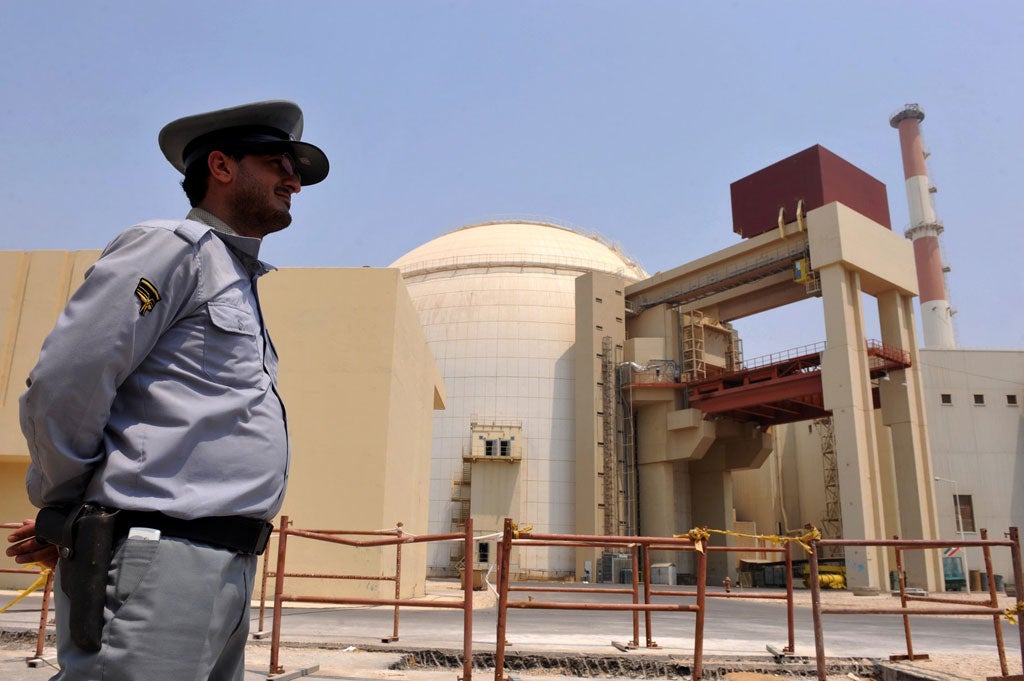Nuclear Iran: The Birth of an Atomic State, By David Patrikarakos
This is a welcome analysis of Iran's self-perception, its nuclear plans and Western responses

For the past ten years there has been tension over Iran's nuclear plans, with deep suspicions by Israelis and conservative Americans that the Islamic Republic is engaged in developing nuclear weapons under cover of a civil nuclear-power programme. The tensions have ebbed and flowed, with a particularly dangerous period back in 2006 when George W Bush had US military forces on a high alert across the Middle East.
In spite of the opening of a new round of talks earlier this year, there is persistent talk of the Israelis going it alone and attacking Iran's nuclear plants and missile forces. Six years ago the Israelis did not command sufficient long-range strike aircraft, but that has changed with the deployment of well over a hundred F-15I and F-16Is. They also have numerous ballistic and cruise missiles, and a large force of armed drones, but they are facing an Iran that has now moved some key facilities deep underground at Fordo near Qom.
For the Israelis, time is running out before Iran becomes so difficult to attack that only the US could do it, so it is still possible that a crisis could develop before the US election on 6 November. Israeli politicians fear that a second-term Obama administration would have far too much freedom of action on Palestine and on Iran – a thoroughly unpalatable prospect.
At the root of all this is the actual Iranian programme and what it might lead to. Many analysts have written about the recent past and there is a wealth of information in the public domain, yet there have been few thorough studies of the overall history. This is where David Patrikarakos's Nuclear Iran is such a welcome contribution. Where it really scores is in its long-term perspective, throwing much light on origins and motivations.
As to origins, the era of the Shah is key, especially after the huge hike in oil prices in 1973-4, when for a few years Iran was flush with money. Even before that, the Shah's regime was already intent to see Iran leapfrog its neighbours into regional great-power status, and right back in 1957 started the nuclear element of this with the opening of a nuclear training centre organised by CENTO (NATO's ally for the Middle East).
The US provided the Tehran Research Centre's 5MW research reactor, which went critical in 1967. One of the ironies of history is that the original fuel for the reactor, supplied by the US, was 93 per cent enriched Uranium 235, a weapons-grade quality. Fast-forward nearly ten years and plans were being laid for 20 nuclear power reactors, starting with the German-built plant at Bushehr on the Persian Gulf. Questions of nuclear weapons ambitions were left unanswered but, in any case, the Revolution intervened and Bushehr lay half-built for three decades.
The Islamic Republic eventually started to redevelop the industry, but behind this was the question of motivation. In the Shah's era, the belief was that nuclear power was a true symbol of modernity. This may seem odd now, after Three Mile Island, Chernobyl and Fukushima, but back in the 1970s nuclear power was expanding across the world. What is essential for any understanding of current Iranian attitudes is the way that nuclear power remains that symbol of modernity, surviving the Revolution and nuclear setbacks elsewhere. It lies right at the core of Iran's perception of itself as it seeks a return to a status it has not held for millennia.
As Patrikarakos comments: "Spurred by ideology and Khomeini, the programme became a means of appropriating Western technology to help create an identity for Iran in the modern world, but on its own uniquely Iranian and Islamic terms".
It is possible that Iran may permanently eschew nuclear-weapons ambitions and a negotiated settlement may be reached. What it most definitely will not accept is any limitation on its development of nuclear power. Unless the West and Israel come to accept this, the crisis cannot be resolved. Nuclear Iran could do much to hasten that acceptance.
Paul Rogers is professor of peace studies at Bradford University
Subscribe to Independent Premium to bookmark this article
Want to bookmark your favourite articles and stories to read or reference later? Start your Independent Premium subscription today.

Join our commenting forum
Join thought-provoking conversations, follow other Independent readers and see their replies